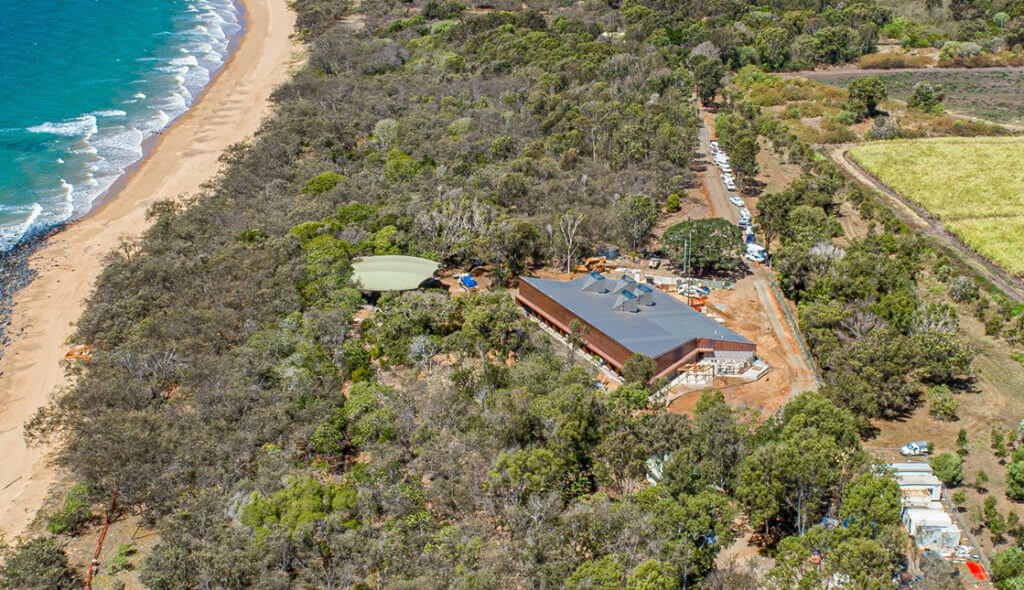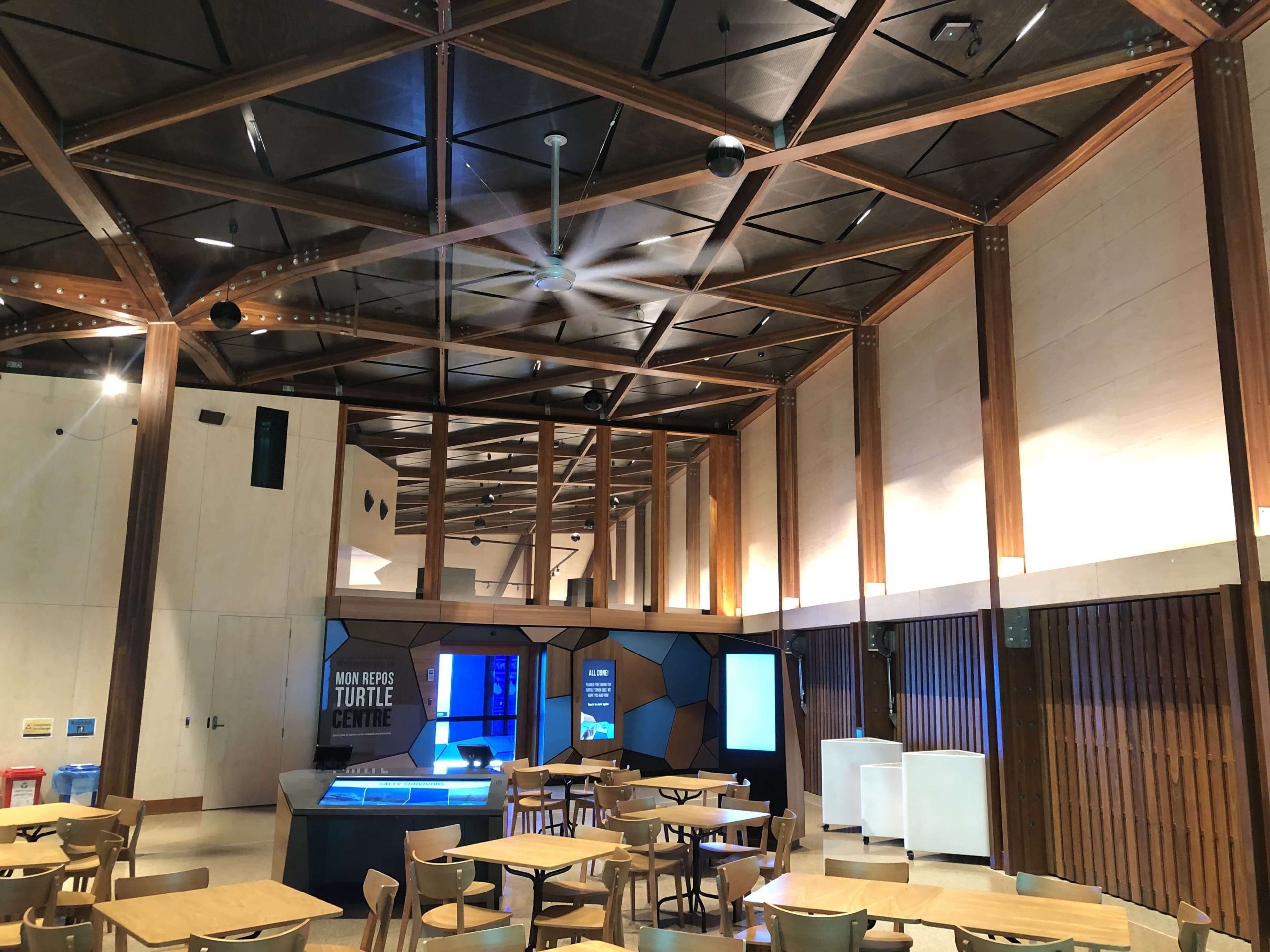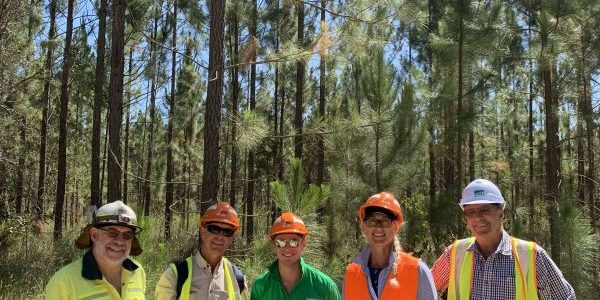The Mon Repos Turtle Centre is a sight to behold! Dedicated to marine turtle research, protection and education the centre is a must for all that visit Mon Repos.
Welcoming more than 20,000 visitors a season, Mon Repos is home to the largest concentration of marine turtles on the eastern Australian mainland. Indeed, the success of nesting and hatching turtles at Mon Repos is critical for the survival of the endangered loggerhead turtle.
Mon Repos, meaning ‘my rest’ in French, is a conservation park near Bundaberg, Queensland where passionate rangers and scientists manage conservation and research programs to enhance the success of nesting before hatchlings make their perilous journey to the sea some months later.

Commissioned by the Queensland Parks and Wildlife Service, the Mon Repos Turtle Centre underwent a $22 million dollar rejuvenation. Located behind the sand dunes, the new Centre embodies the famous turtle’s connection with nature – encapsulated within the project brief, ‘connected to nature.’
In the grand opening media release, Queensland Minister for the Environment and the Great Barrier Reef explains:
“The centre will offer a year-round state-of-the-art experience, with touch screen televisions, vivid displays, an immersive theatre room and interpretive signage,” she said.
“This redevelopment now provides a contemporary ecotourism experience that allows visitors to fully immerse themselves in marine turtle research and conservation.
“The design of the centre was carefully considered to ensure the building is ecologically sustainable, long-lasting and had minimal impact on the surrounding environment,” said Ms Enoch.
For Richard Kirk, the Centre’s award winning Architect, the brief for the Centre is underpinned by focus on sustainability and environment.
“Firstly, the location is behind established sand dunes which provide a natural shield between the building and the hatchings to conceal the possible spill of the buildings light,” Mr Kirk said.
Embracing sustainability in its design, the new centre featured a prefabricated Hyne glulam timber structure.

In addition, Austral Plywood supplied Hoop Pine “ariaply”, a premium prefinished panel based on “A” grade Hoop Pine plywood.
Locally grown and manufactured, the timber meets the Australian Standard for Sustainable Forest Management, a prerequisite for Responsible Wood certification. Mr Kirk explains:
“The entire glue laminated timber structure is locally grown, certified Spotted Gum, not only meeting exceptional sustainability credentials, but from a practical perspective, allows large spans with no internal structural walls.
“This means the interior can be readily, seasonally reconfigured to meet the educational and conservation needs of the centre and its year-round visitors,” Mr Kirk said.
The Mon Repos structure itself is known as a ‘diagrid’ which presents an innovative resistance against cyclonic conditions. It is believed to be the largest diagrid in Australia.
Natural Hoop ariaply in solid sheets were used as wall linings throughout the Centre.

Austral Plywood’s Joint Chief Executive Officer, Stuart Matthews explains:
“The ceiling is particularly impressive, consisting of numerous perforated triangles made from ariaply in an Ebony finish. The triangular shapes, representing a turtle’s carapace, were meticulously cut from detailed plans supplied by the architect. The perforations provided both acoustic benefits and an attractive appearance to the Centre,” Mr Matthews said.
The significance of using Spotted Gum goes far beyond the environmental credentials and support for the local economy. This particular timber was specified for its durability, strength, density and appearance to suit the corrosive, coastal environment.
For Hyne Group Business Development Manager – Glue Laminated Timber, Rob Mansell, the use of sustainably sourced glue laminated timber was instrumental in meeting the 50 year design life requirement in what is a corrosive marine environment where steel structures are highly susceptible to corrosion.
“Using timber, when detailed well such as in the Mon Repos project, means we can meet the minimum 50 year design life requirement,” Mr Mansell said.
For more information about the Mon Repos Turtle Centre, including opening hours, please visit the Mon Repos website.
For more information about forest certification, including additional case studies, please visit the Responsible Wood website.







